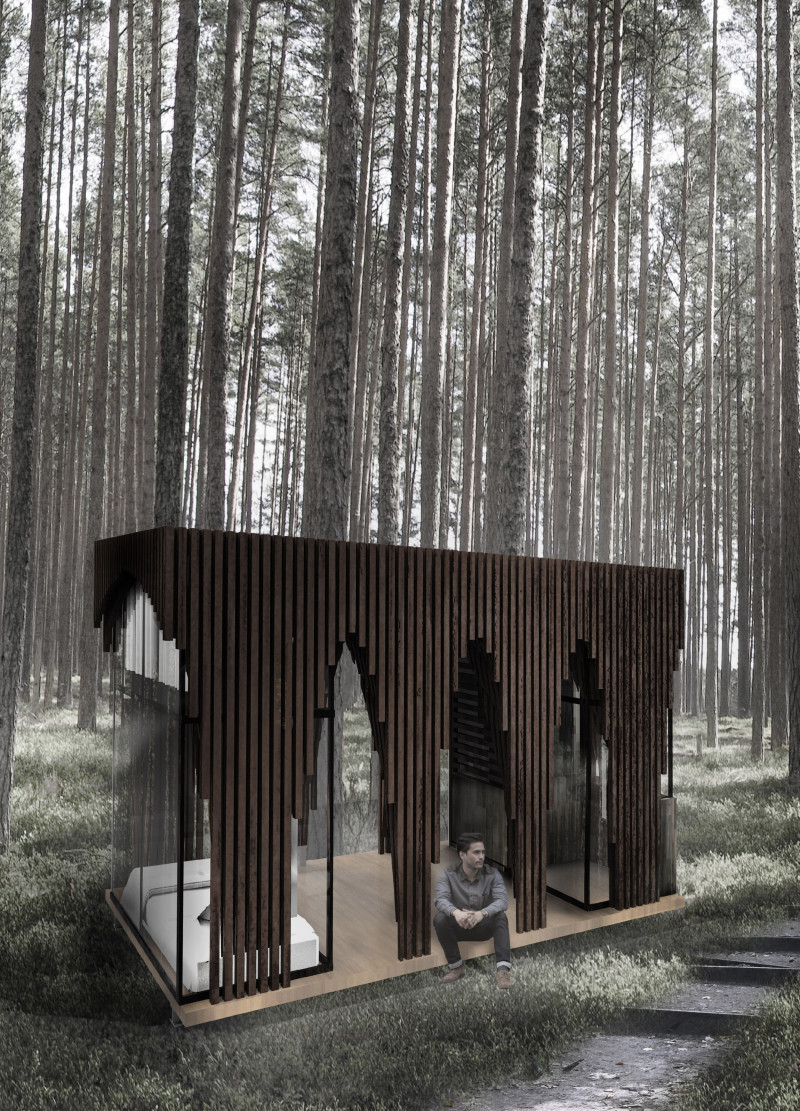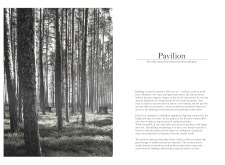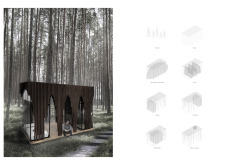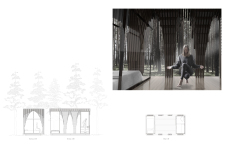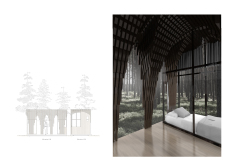5 key facts about this project
The structural design emphasizes an open layout that allows for natural light and air flow, enhancing the experience of the users. The pavilion features flexible spaces that can be reconfigured for different uses, reflecting the diverse needs of its occupants. Important architectural elements include the use of engineered wood and glass, which not only contribute to the aesthetic quality of the pavilion but also enhance its sustainability. The materials are selected for their low environmental impact and durability, ensuring that the pavilion harmonizes with its surroundings over time.
Spatial dynamics are crucial in this design. A central meditation space serves as the heart of the pavilion, where users can engage in practices that promote relaxation and introspection. The roof structure employs an arched form, which draws inspiration from natural elements and traditional architecture. This design choice facilitates a seamless transition from the interior to the exterior while maximizing light penetration. By inviting users to interact with the surrounding forest, the pavilion becomes more than just a physical structure—it serves as a medium for experiencing the tranquility of the natural world.
The project distinguishes itself through its commitment to sustainability and the integration of cultural influences. Traditional Latvian craftsmanship is reflected in the detailing and construction techniques, which imbue the pavilion with a sense of place. Unique among similar projects, this pavilion emphasizes a fluid design approach that accommodates a variety of activities while prioritizing user interaction with nature. The incorporation of movable panels further highlights the adaptability of the space, providing a versatile environment that can be tailored to different functions.
The combination of modern materials with traditional forms, along with an innovative spatial organization, makes this pavilion a noteworthy example of contemporary architecture that respects its natural context. Professionals and enthusiasts are encouraged to explore the project presentation to gain deeper insights into its architectural plans, sections, designs, and ideas. This exploration will reveal the nuanced layers of thought and intention that characterize the project, as well as its practical applications in fostering mindfulness and connection with the natural world.


